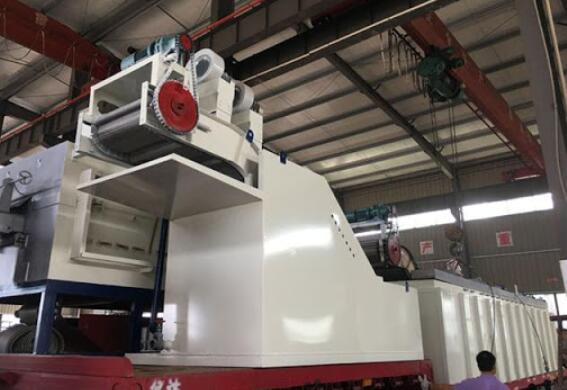Vacuum Nitrocarburizing furnace, heat treatment furnace

Description:
Vacuum nitriding is a heat treating process that diffuses nitrogen into the surface of a metal to create a case hardened surface. These processes are most commonly used on low-carbon, low-alloy steels, however they are also used on medium and high-carbon steels, titanium, aluminum and molybdenum.
Typical applications include gears, crankshafts, camshafts, cam followers, valve parts, extruder screws, die-casting tools, forging dies, extrusion dies, components, injectors and plastic-mold tools.
Carburizing, carburising, or carburization is a heat treatment process in which iron or steel absorbs carbon liberated when the metal is heated in the presence of a carbon bearing material, such as charcoal or carbon monoxide, with the intent of making the metal harder. Depending on the amount of time and temperature, the affected area can vary in carbon content. Longer carburizing times and higher temperatures typically increase the depth of carbon diffusion. When the iron or steel is cooled rapidly by quenching, the higher carbon content on the outer surface becomes hard via the transformation from austenite to martensite, while the core remains soft and tough as a ferritic and/or pearlite microstructure.
This manufacturing process can be characterized by the following key points: It is applied to low-carbon workpieces; workpieces are in contact with a high-carbon gas, liquid or solid; it produces a hard workpiece surface; workpiece cores largely retain their toughness and ductility; and it produces case hardness depths of up to 0.25 inches (6.4 mm). In some cases it serves as a remedy for undesired decarburization that happened earlier in a manufacturing process.
Application :
Carburization of steel involves a heat treatment of the metallic surface using a source of carbon. Carburization can be used to increase the surface hardness of low carbon steel.
Early carburization used a direct application of charcoal packed onto the metal (initially referred to as case hardening), but modern techniques apply carbon-bearing gases or plasmas (such as carbon dioxide or methane). The process depends primarily upon ambient gas composition and furnace temperature, which must be carefully controlled, as the heat may also impact the microstructure of the rest of the material. For applications where great control over gas composition is desired, carburization may take place under very low pressures in a vacuum chamber.
The process of carburization works via the implantation of carbon atoms into the surface layers of a metal. As metals are made up of atoms bound tightly into a metallic crystalline lattice, the implanted carbon atoms force their way into the crystal structure of the metal and either remain in solution (dissolved within the metal crystalline matrix — this normally occurs at lower temperatures) or react with the host metal to form ceramic carbides (normally at higher temperatures, due to the higher mobility of the host metal's atoms). Both of these mechanisms strengthen the surface of the metal, the former by causing lattice strains by virtue of the atoms being forced between those of the host metal and the latter via the formation of very hard particles that resist abrasion. However, each different hardening mechanism leads to different solutions to the initial problem: the former mechanism — known as solid solution strengthening — improves the host metal's resistance to corrosion whilst impairing its increase in hardness; the latter — known as precipitation strengthening — greatly improves the hardness but normally to the detriment of the host metal's corrosion resistance. Engineers using plasma carburization must decide which of the two mechanisms matches their needs.
Gas carburizing is normally carried out at a temperature within the range of 900 to 950 °C.
In oxy-acetylene welding, a carburizing flame is one with little oxygen, which produces a sooty, lower-temperature flame. It is often used to anneal metal, making it more malleable and flexible during the welding process.
Parameter :
Effective working zone size : 800x800x1200mm
Max temperature(C) :1300
Ultimate pressure(pa):4x10-1
Pressure rising rate (pa/h): 0.5
Temperature uniformity(C):±5
Loading capacity (kg):1200






